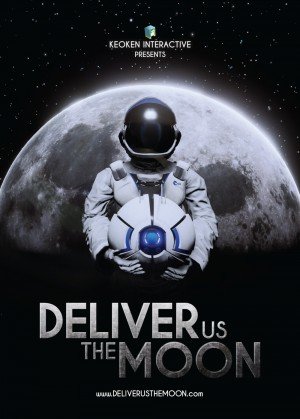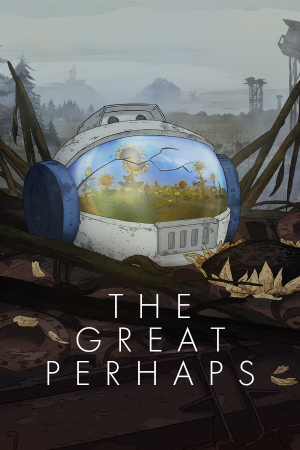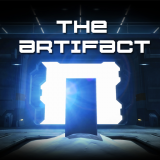Review for Deliver Us the Moon

The year is 2059, and things are not looking good for Earth. 2030 saw the great energy crisis, and as a result the World Space Agency was formed to find a new energy source. It turned out the vast reserves of Helium 3 found on the moon could be used to solve the problem, so in 2032 a lunar colony was formed to mine this invaluable commodity. But two decades later the energy transfer mysteriously stopped and communication with the moon was lost, putting the planet in a dire situation. The next year the WSA was shut down permanently, but a small group of ex-employees worked in secret to mount a mission to send an astronaut to find out what went wrong.
You are that astronaut in KeokeN’s Deliver Us the Moon, a stunning-looking 3D sci-fi adventure in which you will blast your way into space and then traverse the moon’s surface and its various man-made stations to investigate what went wrong – an investigation that can finally be completed with the arrival of the long-awaited free DLC ending promised when the game was released a year earlier. During your exploration you will not only be confronted with many challenging and (mostly) interesting puzzles, you'll slowly uncover an intriguing story of what became of the colonists and why the moon went “dark” via digital records left behind, though to do so you’ll also need to contend with a few too many frustrating timed sequences.
As the anonymous, generally unseen hero charged with this daunting task, there is no explanation of who you are or how you got here, but clues found at the beginning suggest you have been training for this mission for some time. You begin at the Fesenkov launch site in a desert location with a sandstorm approaching. Once you don your spacesuit, you will be in radio contact with Claire Johanson, the lead scientist at Mission Control who will help you as much as she can throughout your journey.
Your first task is to launch the rocket before the storm destroys the facility. Here you are introduced to the controls and interface via a series of on-screen prompts. The majority of the game is played using the keyboard to guide your character and interact with items, while the mouse pans the camera and determines your direction of movement. The mouse can also be used to scan highlighted items as you progress through later locations. The Tab key brings up the “Dossier” display that includes a database to keep track of your discoveries, a mission log serving as your task list (and also recording important passcodes as you find them), and a tools tab that lets you know what spacesuit equipment you have at your disposal at any given time.
Along with the rocket itself, you will eventually get to explore a number of interesting settings, including the Pearson Space Station (where you will need to navigate in a weightless environment), the Copernicus Moon base, Huygen’s Research Facility, and Reinhold Station. Each of these locations is gorgeously rendered with excellent 3D graphics, animations, and attention to detail. Everywhere you look are signs of the missing colonists, such as a chessboard, hand-written notes and personal effects (books, letters, children’s drawings, etc.). The cozy, lived-in scenes stand in stark contrast to the more barren, empty places you visit. Additional touches like safety posters, storage containers, crates, lockers, and other items further add to the realism of the experience.
Of particular note is the animation during the rocket launch, where you can see the gantry pulling away and almost feel the G-force acceleration as you look down at the receding launch pad. Also impressive is the physics engine used for the zero-gravity areas in the space station. As you maneuver through floating objects, they realistically react to you contacting and moving them around, although this can lead to some disorientation as you try to find your way. Add in excellent sound effects, such as the sandstorm brewing in the desert, the roar of the rocket launch, and the squealing of brakes on a lunar monorail (the list goes on), you feel as if you are really there. The background music contributes to immersion as well, suitably soothing or ominous as required, looping occasionally in each setting.
In order to reach these locales you must, of course, solve puzzles and overcome obstacles along the way. While traditional adventure game challenges are involved, such as finding codes to locked doors, figuring out the correct sequence of controls to launch the rocket, finding parts to assemble an important mechanical companion, and manipulating a few inventory items, the majority of puzzles consist of timed events (where you can die) and environmental tasks in which you must use the keyboard to navigate and avoid trouble.
I think most adventure gamers can appreciate a few timed events – after all, they instill a sense of urgency and can add to the tension and fun – but in this case I counted more than ten! Largely based on trial and error, some of them are pretty straightforward and you will probably succeed the first time through, but several are tough and you’ll most likely be killed numerous times before you figure out what to do. If you die you are usually restored to the point where you made your mistake, but in particular instances you need to start the sequence over from scratch, which can be quite frustrating. A good example is when must restore life support to the Pearson Space Station. You have a limited supply of oxygen but can collect additional O2 canisters to extend your time. This is a complex problem to fix, however, and no matter how much oxygen you collect you will almost certainly need to replay this scenario several times before resolving the issue.
Fortunately there are a few creative puzzles as well, especially those involving your ASE (All-Seeing-Eye), a floating robotic AI unit. Once active, you can use the ASE to access areas you can’t via remote control to do things like open locked doors, disable security systems, and activate power grids. While it is usually obvious when to use the ASE, the puzzles themselves require more thought to solve. Don't be surprised to become very attached to it as the game progresses, much like the Companion Cube in Portal.
In terms of character and plot development, Deliver Us the Moon really shines. While you never actually meet anyone else, the colonists are fleshed out through the virtual recordings left behind. As you explore, you will see active voice waveforms that you can listen to when you pass through them. These are logged in your database under the appropriate headings. Each heading in your Dossier has a found/total number so you know if you have missed something that might be useful in your investigation. You will also encounter hologram recordings made by one of the crew’s ASE units during the crisis that befell them. These sequences are very stylized, using just coloured silhouettes instead of real people, to excellent effect. Like the audio waves, they are location-based so you need to explore thoroughly to find them all. When you watch a hologram, it too is automatically added to your Dossier.
In both cases the voice acting is well done, and you can really relate to these people and what they experienced. The main character in the audio recordings is Engineer Sarah Baker. Her log entries indicate she was the last person trying to get the bottom of the blackout, and this provides motivation to follow in her footsteps to discover her fate. There is also an intriguing audio entry when you first open the Dossier labelled “Encrypted transmission,” but you will need to collect more Dossier items to decipher the message. You soon discover that something sinister took place which resulted in the loss of power and communication, but you will also learn about the crew’s personal relationships that are quite touching and add a lot to the narrative.
An autosave system is used to keep track of your progress, which works well for the most part. In some cases, however, there can be a long period of time to repeat if you fail or quit and restore from the previous checkpoint. In particular, there are two back-to-back timed segments that can be quite challenging. Play time will vary according to how skilled you are on the keyboard. The average player will likely take 10 -12 hours to complete the game, depending on how many times it takes to work through the timed events.
When the game was first released with the subtitle “Fortuna,” it abruptly ended before the story was complete. While the developers promised to finish the tale with a free DLC update, the lack of transparency rightly disappointed players who were unaware they were only getting the first part of the experience. It didn’t help that the next installment took more than a year to arrive, but at long last it is available and it’s proved to be worth the wait, providing a new setting and a significant amount of additional gameplay, tweaking puzzle design and game mechanics, and offering a fitting conclusion to the narrative.
The action picks up right where the previous section left off, with your monorail arriving at Tombaugh station. The station is damaged, however, and you will need to find a way to open an emergency access hatch. This triggers a familiar timed event in which you need to run/jump across a series of pillars to get to safety before your oxygen supply runs out. But this time there’s a difference, as new to achieving this task is an oxygen regeneration station (rather than a series of hidden oxygen canisters) with an apparently unlimited supply, so you can revisit this station each time you fail (which for me was many times) to recharge. This option persists the remaining two times you face suffocation later on and is a welcome addition!
The Tombaugh facility is expansive, with many sections to explore, dangers to avoid and puzzles to solve. You will need to use your trusty ASE to bypass some of them, but the bulk of the challenges are environmental, requiring you to access and manipulate objects directly to advance. There are still time-based activities but they are few and far between, suggesting the developers likely listened to feedback from players of the original release. In any case, kudos to them for the change as I found the balance of the game much more enjoyable with the puzzles more in keeping with traditional adventure games. For example, there are several logic problems that involve placing power cells in the right positions and correct order to gain access to a key object needed to unlock the next section of the base. In another multi-part puzzle, you have to navigate your way past “evil” ASE units that have been compromised, but once you analyze their movement pattern it is pretty easy to avoid them.
While I appreciated these more conventional puzzles, there is still one very annoying timed sequence at the end of the game. Here you have to reach and then realign the main power transmission tower, but you move very slowly and your vision is blurred. There is a countdown you need to beat, and once you get to the control room you must use a joystick to line things up. During this process you lose focus several times and therefore need to continually readjust the alignment crosshairs until you finally complete the task. Like the arcade-style sequences before this, it took me many tries to succeed. What needs to be done is obvious, but the game makes it so frustrating to accomplish the task that it will likely leave a bad taste in your mouth, which is a shame when so much of the new DLC gameplay is enjoyable overall.
You will also run into more audio and video files that progress the story, allowing you to learn more details about what happened at the station and why, as well as discovering Sarah Baker's ultimate fate. In addition, more personal details about the crew and their motivations are revealed through their private items, emails and journals. Without spilling the beans, I think most players will be pleasantly surprised at the outcome. In popular Marvel movie tradition, there is even a post-credit cut scene that is not to be missed, so be patient in waiting right to the very end.
While playing the two parts of Deliver Us the Moon a year apart was certainly not my preferred way of experiencing the game, now that it’s complete I can safely say that I enjoyed it for the most part, though it would certainly have been better if not for the very frustrating and plentiful timed sequences, resulting in the need to constantly replay many sections of the game. The balance of puzzles, mainly environment-based, are well-designed and properly clued, and though they’re challenging they are quite fun to solve. The story, too, is compelling throughout, told primarily through various recordings made by a previous inhabitant’s ASE unit; the final few entries are especially well done and will keep you guessing as what became of her. Overall, though I hope not to see a repeat of their staggered release schedule, KeokeN Interactive shows great promise in this genre, and I very much look forward to their next adventure.
WHERE CAN I DOWNLOAD Deliver Us the Moon
Deliver Us the Moon is available at:
We get a small commission from any game you buy through these links (except Steam).Our Verdict:
If you can get past all the timed events and repetition from multiple deaths, the slick-looking Deliver Us the Moon will reward you with an an evolving story and interesting characters in an evocative sci-fi setting filled with challenging obstacles to overcome.






























